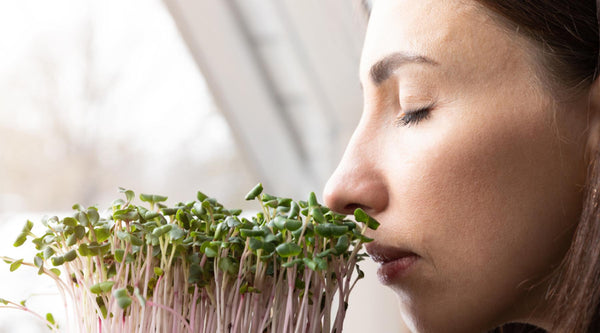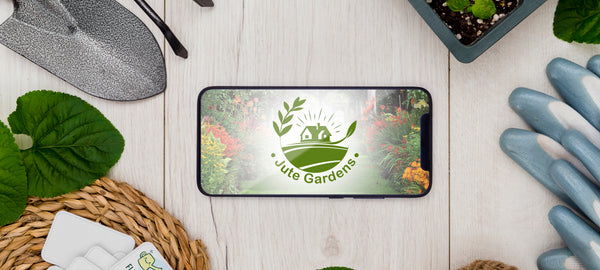
Micro Greens: The Tiny Superfood You Need in Your Diet
Micro greens are a type of young vegetable that are harvested at the cotyledon or first true leaf stage. These tiny greens pack a big punch in terms of nutritional value and flavor, making them a popular choice for both home gardeners and chefs alike.
Benefits
One of the main benefits of micro greens is their high nutrient content. These tiny greens are loaded with vitamins and minerals, including vitamin C, K, and E, as well as beta-carotene and antioxidants. They also contain higher levels of certain nutrients than their mature counterparts, such as vitamin C and beta-carotene. This makes them a great addition to any diet, especially for those looking to increase their intake of vitamins and minerals.
Popular Varieties
Popular varieties of micro greens include arugula, radish, beet, broccoli, and sunflower. Each variety has its own unique flavor and nutritional profile, making them versatile in the kitchen. Arugula micro greens, for example, have a spicy, peppery flavor and are a great addition to salads, sandwiches, and pasta dishes. Radish micro greens, on the other hand, have a mild, slightly spicy flavor and can be used as a garnish or added to sandwiches and soups.

Growing at Home
Growing micro greens at home is easy and requires minimal space and equipment. All you need is a container, soil, and seeds. A container can be anything from a plastic tray to a repurposed container. Preparing the soil is simple, just make sure it is well-draining and moist. Sowing the seeds is as easy as scattering them over the soil and lightly pressing them down. Once the seeds are sown, it is important to keep the soil moist and in a warm location with plenty of light. In as little as one week, you will have a crop of micro greens ready to harvest.
Uses
There are many ways to use micro greens in the kitchen. They can be added to salads and sandwiches for a burst of flavor and nutrition, used as a garnish to add color and texture to dishes, or incorporated into smoothies and juices for a nutritional boost. They can also be cooked with, such as sautéed with garlic and olive oil as a side dish, or added to soups and stews for added flavor and nutrition.
Harvesting
Harvesting micro greens is easy and can be done with scissors or a sharp knife. The best time to harvest is when the greens are at least 1-2 inches tall. Once harvested, it is important to store them properly to prolong their shelf life. Micro greens can be stored in a plastic bag with a damp paper towel, or in a container with a lid and a damp paper towel. This will help to keep them fresh and prevent them from drying out.
Conclusion
In conclusion, micro greens are a great addition to any diet. Not only are they packed with vitamins and minerals, but they also add flavor and texture to dishes. Growing micro greens at home is easy and requires minimal space and equipment. Whether you're a seasoned gardener or a beginner, micro greens are a fun and easy way to add nutrition to your diet. And with their versatility in the kitchen, you can use them in a variety of dishes to add a pop of flavor, color and nutrient boost.
Incorporating micro greens into your diet can have many benefits, and the best way to do that is by growing them yourself. Not only will you have a steady supply of fresh greens, but you'll also be able to enjoy them at their peak of freshness. Micro greens are easy to grow and care for, and with a little bit of time and effort, you can enjoy the taste and health benefits of fresh, homemade micro greens all year round.
Frequently Asked Questions
Q: What are micro greens?
A: Micro greens are young vegetable plants that are harvested at the cotyledon or first true leaf stage. They are smaller than baby greens, but larger than sprouts. They have a high nutrient content and unique flavor.
Q: What are the nutritional benefits of micro greens?
A: Micro greens are high in vitamins and minerals, such as vitamin C, K, and E, as well as beta-carotene and antioxidants. They also contain higher levels of certain nutrients than their mature counterparts, such as vitamin C and beta-carotene.
Q: What are some popular varieties of micro greens?
A: Some popular varieties include arugula, radish, beet, broccoli, and sunflower. Each variety has its own unique flavor and nutritional profile.
Q: How do I grow micro greens at home?
A: Growing micro greens at home is easy and requires minimal space and equipment. All you need is a container, soil, and seeds. Simply scatter the seeds over the soil, keep the soil moist and in a warm location with plenty of light and in as little as one week, you will have a crop of micro greens ready to harvest.
Q: What are some uses for micro greens in the kitchen?
A: Micro greens can be added to salads and sandwiches, used as a garnish, incorporated into smoothies and juices, or cooked with as a side dish or added to soups and stews.
Q: How do I harvest and store micro greens?
A: Micro greens can be harvested with scissors or a sharp knife when they are at least 1-2 inches tall. To store them, keep them in a plastic bag with a damp paper towel or in a container with a lid and a damp paper towel. This will help to keep them fresh and prevent them from drying out.
Q: Are there any special care instructions for micro greens?
A: Micro greens require moist and warm location with plenty of light and well-draining soil. Keep the soil moist and make sure they have enough light, but not too much, as they can get leggy.
Q: How can I incorporate micro greens into my diet?
A: Micro greens can be added to salads and sandwiches, used as a garnish, incorporated into smoothies and juices, or cooked with as a side dish or added to soups and stews. They can also be used as a garnish to add color and texture to dishes.
Q: How long will micro greens last once harvested?
A: Micro greens can last for about a week when stored properly in a plastic bag with a damp paper towel or in a container with a lid and a damp paper tow

